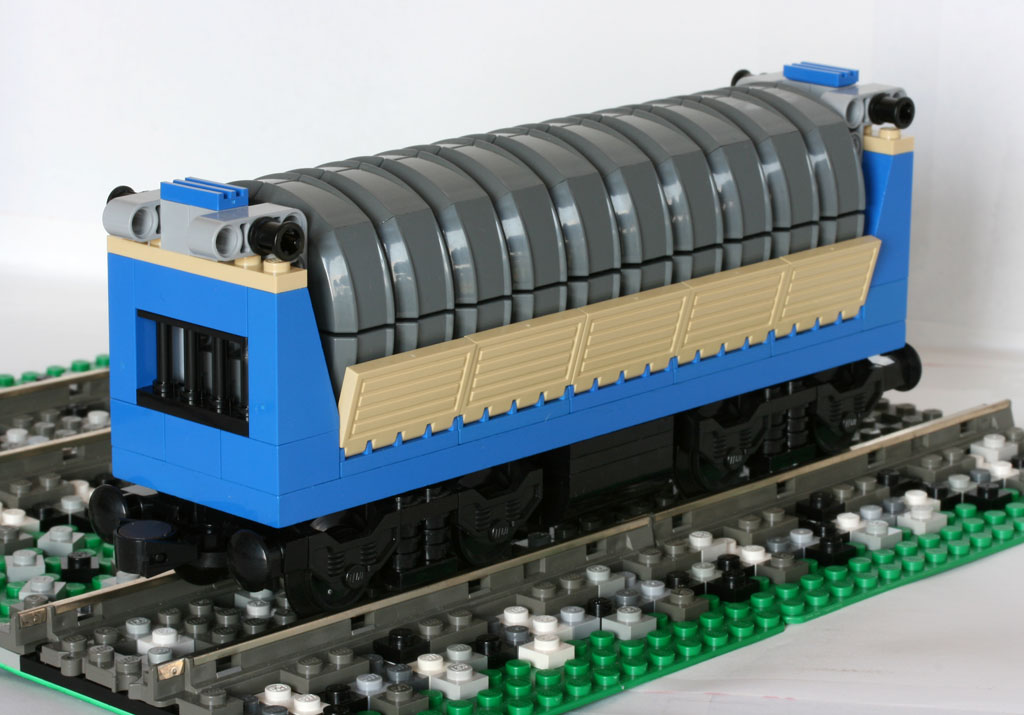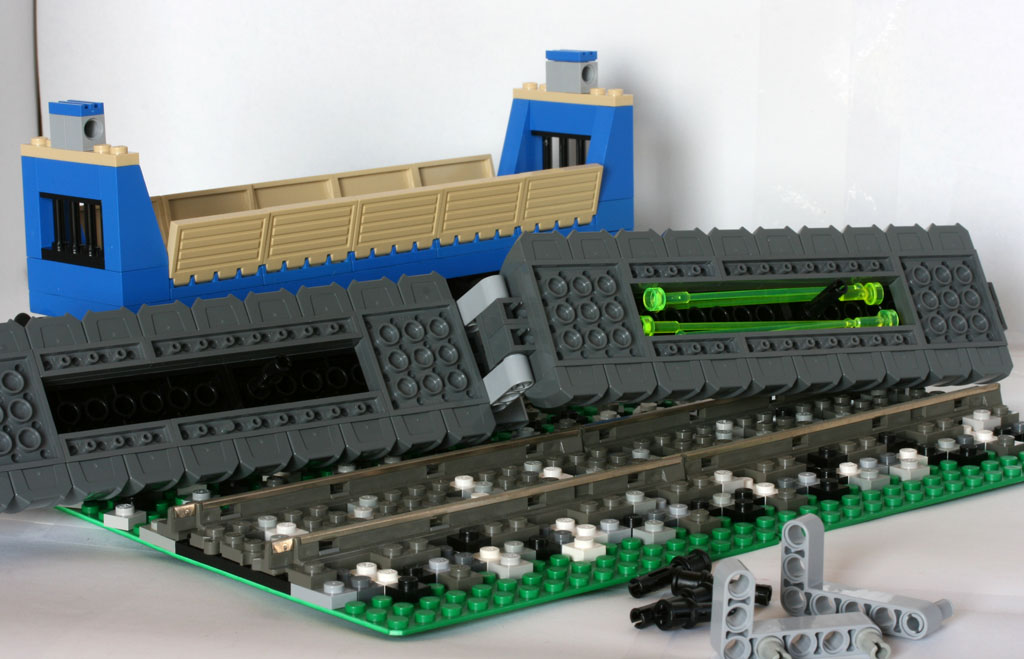| |
I have always had a fascination with nuclear power and anything related to it. I
still firmly believe that nuclear power is one of the cleanest and most
efficient methods of producing mass amounts of power and I sincerely hope that
we continue to pursue advances in nuclear science that will help produce more
efficient, cleaner, and safer power.
With that in mind, when I needed additional rolling stock for Brickworld 2008 it
only seemed natural to build a spent nuclear fuel shipping cask car.

Spent nuclear fuel shipping casks are used to transport spent nuclear fuel used
in nuclear power plants and research reactors to disposal sites such as the
to-be-opened one at Yucca Mountain or the Nuclear reprocessing center at COGEMA
La Hague site. Each shipping container is designed to maintain its integrity
under normal transportation conditions and during hypothetical accident
conditions.
In the United States, the acceptability of the design of each cask is judged
against Title 10, Part 71, of the Code of Federal Regulations (other nations’
shipping casks, possibly excluding Russia’s, are designed and tested to similar
standards (International Atomic Energency Agency “Regulations for the Safe
Transport of Radioactive Material” No. TS-R-1)). The designs must demonstrate
(possibly by computer modeling) protection against radiological release to the
environment under four hypothetical accident conditions, designed to encompass
99% of all accidents.
In addition, between 1975 and 1977 Sandia National Laboratories conducted
full-scale crash tests on spent nuclear fuel shipping casks. Although the casks
were damaged, none would have leaked.

Here we see the cask in its open position with the spent nuclear fuel on
display. The cask was constructed as two halves and mated with technic pins.
Although the U.S. Department of Transportation (DOT) has the primary
responsibility for regulating the safe transport of radioactive materials in the
United States, the Nuclear Regulatory Commission (NRC) requires that licensees
and carriers involved in spent fuel shipments follow only approved routes,
provide armed escorts for heavily populated areas, use immobilization devices,
provide monitoring and redundant communications, coordinate with law enforcement
agencies before shipments, and notify in advance the NRC and any states through
which the shipments will pass.
Since 1965, approximately 3,000 shipments of spent nuclear fuel have been
transported safely over the U.S.‘s highways, waterways, and railroads.
Comments and critiques are appreciated.
More pictures can be found...
MOCPages Page
Brickshelf Gallery
-Dave
ToT-LUG
|
|
Message has 3 Replies:
4 Messages in This Thread:
  
  
  
- Entire Thread on One Page:
- Nested:
All | Brief | Compact | Dots
Linear:
All | Brief | Compact
|
|
|
|